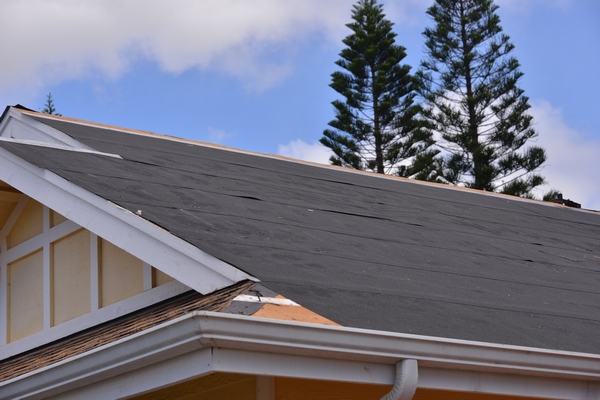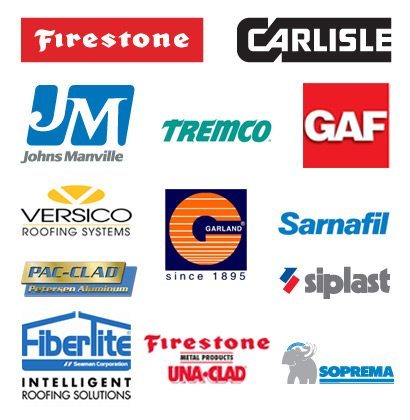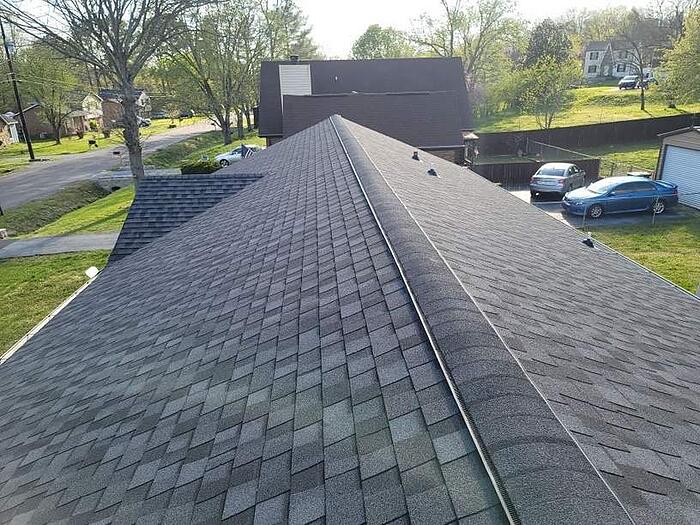
A roof's slope describes the degree to which it is slanted. A steep slope generally has a slope that is more than one-third of the way down, but it can also be as steep as three-quarters. A typical steep-sloped roof has a pitch of nine to ten inches. It may also require additional fasteners or materials. Learn more about roof slopes. Here are a few examples.
The International Residential Code outlines requirements for roofing types and materials. These guidelines contain minimum requirements for roof slope for different types and types of roofing materials. The table below shows the minimum slope for each material. This table is taken from the International Building Code, the base of almost every American building code. To learn more about the types of roofing systems, see our article on determining roof slopes.

The slope of your roof should be at least 2:12 for the best aesthetic appeal. You can adjust the slope of your roof to suit your climate. The steeper your pitch, the lower the angle. For example, a roof with a sloped four inch would require a minimum roof pitch of two and a half inches. A home with a six inch slope will require a higher pitch in order to provide adequate insulation.
Low-pitch roofs make the best residential roofing choice. They are easy to install, and they provide excellent protection from UV rays. They are more likely to leak, and will need to be checked regularly. You can repair a roof that is too steep. A medium-sloped roofing option is best for residential properties. There are two types of flat-sloped roofs available: high-sloped or low-sloped.
There are two basic types, low-slope or high-pitch. Because it sheds water and snow more efficiently, the latter is better for your home. A steep-pitch roof will not work well for covered porches. You should consider a higher-pitch roofing option for your rest of the roof.

High-pitched roofs can also experience leaks. These are usually caused by temperature variations and sunlight exposure. Every year, you should inspect your low-pitch and/or high-pitch roofing systems. You should not only fix leaks but also check the drainage system. Every year, you should inspect your roof drainage system.
The slope of your house will dictate the type of roof you choose. A steeper slope will require a more steeply pitched roof. It will be more efficient, but it will also cost more. Installing a lower-pitch roof system is better for low-sloped roofs. There are many options available if you want to install a steep-sloped roof made of metal.
FAQ
How many times do I need to change my furnace filter?
This depends on how often your family will use their home heating system. You might consider changing your filter less frequently if you are likely to be away from your home for extended periods during the cold months. However, if you rarely go out of the house, you may be able to wait longer between changes.
A furnace filter should last for approximately three months. This means you should change your furnace filters once every three months.
You can also consult the manufacturer's recommendations regarding when to change your filters. While some manufacturers recommend replacing your filter once per heating season, others recommend waiting until there is visible dirt buildup.
How do you choose a good contractor to work with?
Ask your family and friends for recommendations when choosing a contractor. You can also look online for reviews. Look online for reviews to ensure the contractor you choose is experienced in the construction area you are interested. Refer to previous clients and verify their references.
Is it better to hire a general contractor or a subcontractor?
It is more expensive to hire a general contractor than to subcontract. General contractors have many employees so often charge their clients a high amount for labor costs. On the other hand, a subcontractor only hires one employee, so he or she charges less per hour.
Statistics
- A final payment of, say, 5% to 10% will be due when the space is livable and usable (your contract probably will say "substantial completion"). (kiplinger.com)
- They'll usually lend up to 90% of your home's "as-completed" value, but no more than $424,100 in most locales or $636,150 in high-cost areas. (kiplinger.com)
- Design-builders may ask for a down payment of up to 25% or 33% of the job cost, says the NARI. (kiplinger.com)
- On jumbo loans of more than $636,150, you'll be able to borrow up to 80% of the home's completed value. (kiplinger.com)
- Rather, allot 10% to 15% for a contingency fund to pay for unexpected construction issues. (kiplinger.com)
External Links
How To
Do you prefer to renovate the interior or exterior?
Which one should I do first?
When choosing which project to begin with, there are many things to take into consideration. The most common factor is whether the building is old or new. There are many factors to consider if the building is older, such as its roof, condition, windows, doors and flooring. There are many aspects to consider when a building is brand new. These include the size and style of the rooms, as well as their location.
If the building has an older roof, it is worth looking at the roof first. If it looks like the roof could collapse any minute now, you may want to start on the renovation. If your roof is intact, you can proceed to the next phase. Next, look at the windows. You might need to replace them if they are damaged or stained. After this, go through the doorways and make sure that they are clean and free from debris. You can now begin to install the flooring if everything looks fine. Be sure to ensure that the flooring is stable and strong so that you can walk on it without slipping. The next step is to check the walls. You can now examine the walls to check for cracks or damage. If the wall is in good condition, you can move on to the next step. After the walls have been inspected, it is time to inspect the ceiling. Check the ceiling and make sure that it is strong enough to hold up whatever weight you decide to put on it. Once everything is in order, you can proceed with your renovation.
If the building was built recently, then you would probably want to start with the exterior. Start by looking at the outside. Is it in good condition? Are there cracks around? Does it look great? If your exterior isn't looking great, you should make some changes. Your home shouldn't look shabby. Next, you need to inspect the foundation. The foundation should be inspected for weakness and repaired. Also, inspect your driveway. You want it to be smooth and flat. It should be smooth and flat. If it isn’t, you need to fix it. When checking the driveway, also check the sidewalk. It should be replaced if it is uneven.
Once you have completed these inspections, you can now move on inside the house. Look at the kitchen first. Is it clean and well-maintained? If it is dirty or messy, you need to clean it up. Next, you should inspect the appliances. These appliances should be in top shape and functioning properly. If they're not, you can either replace them or repair them. Next, inspect the cabinets. You can paint them if the cabinets are stained or damaged. If they are in good order, you can move onto the bathroom. In here, you should check the toilet. If it leaks then it's time to replace it. If it's just dirty, then you should probably wash it. Next, examine all the fixtures. You should make sure they are clean. If they are dirty, then you should definitely clean them. You should also inspect the countertops. If the countertops are cracked or chipped, you might want to repaint them. If they are smooth and shiny, then you should probably use some kind of sealant.
The last step is to check the furniture. Make sure that none of it is missing or broken. If you find something missing, it's best to fix it. You should repair anything that is damaged. Once you have checked everything, you can return outside to complete the job.